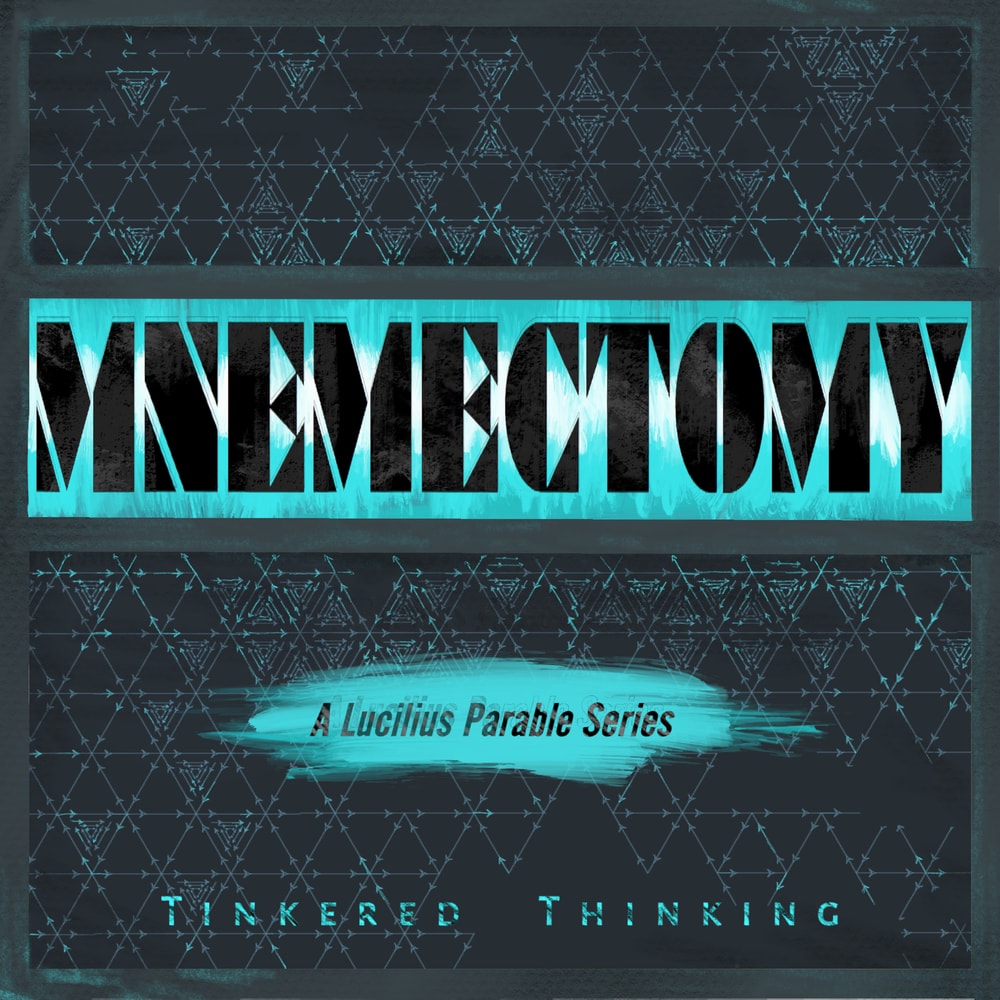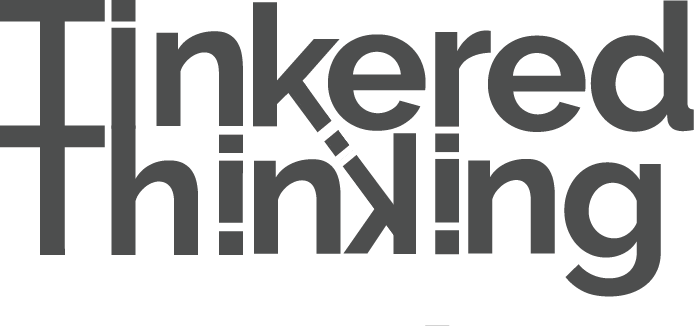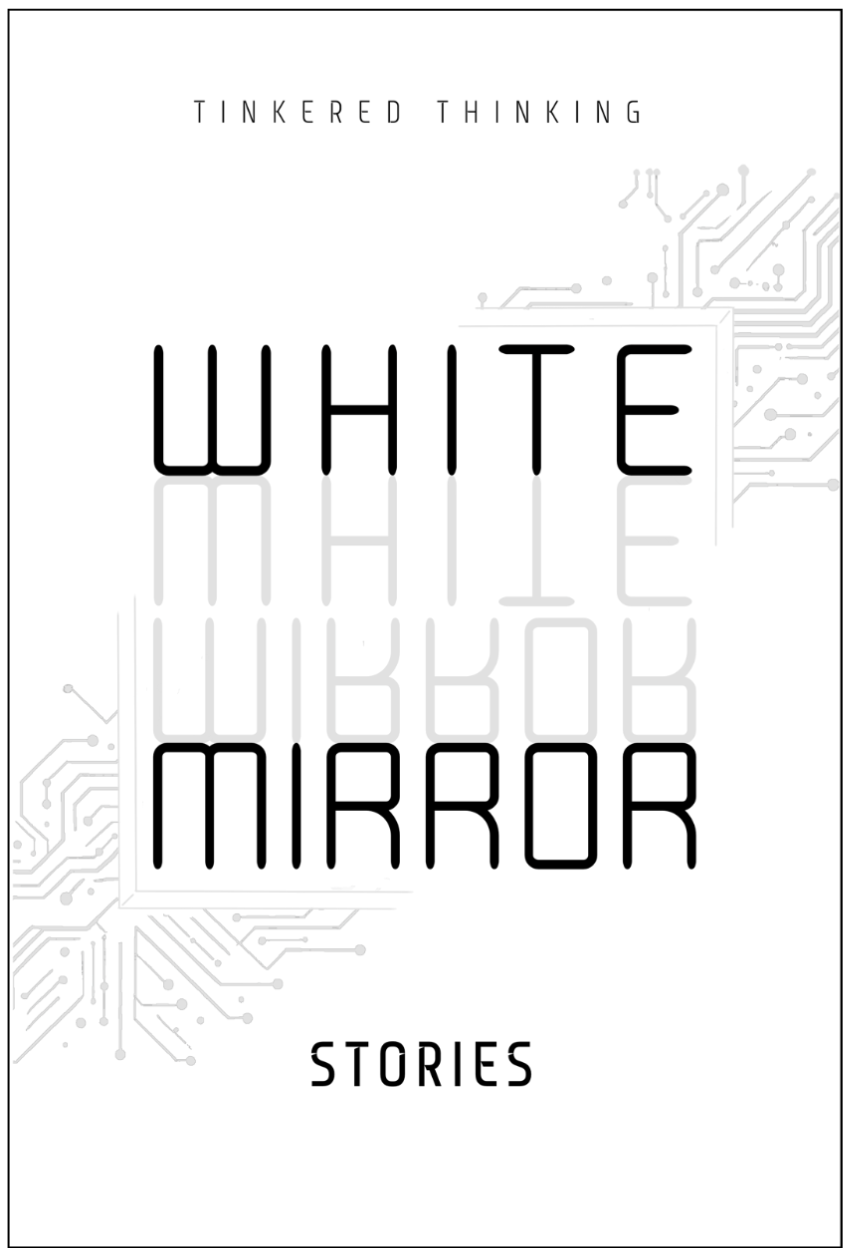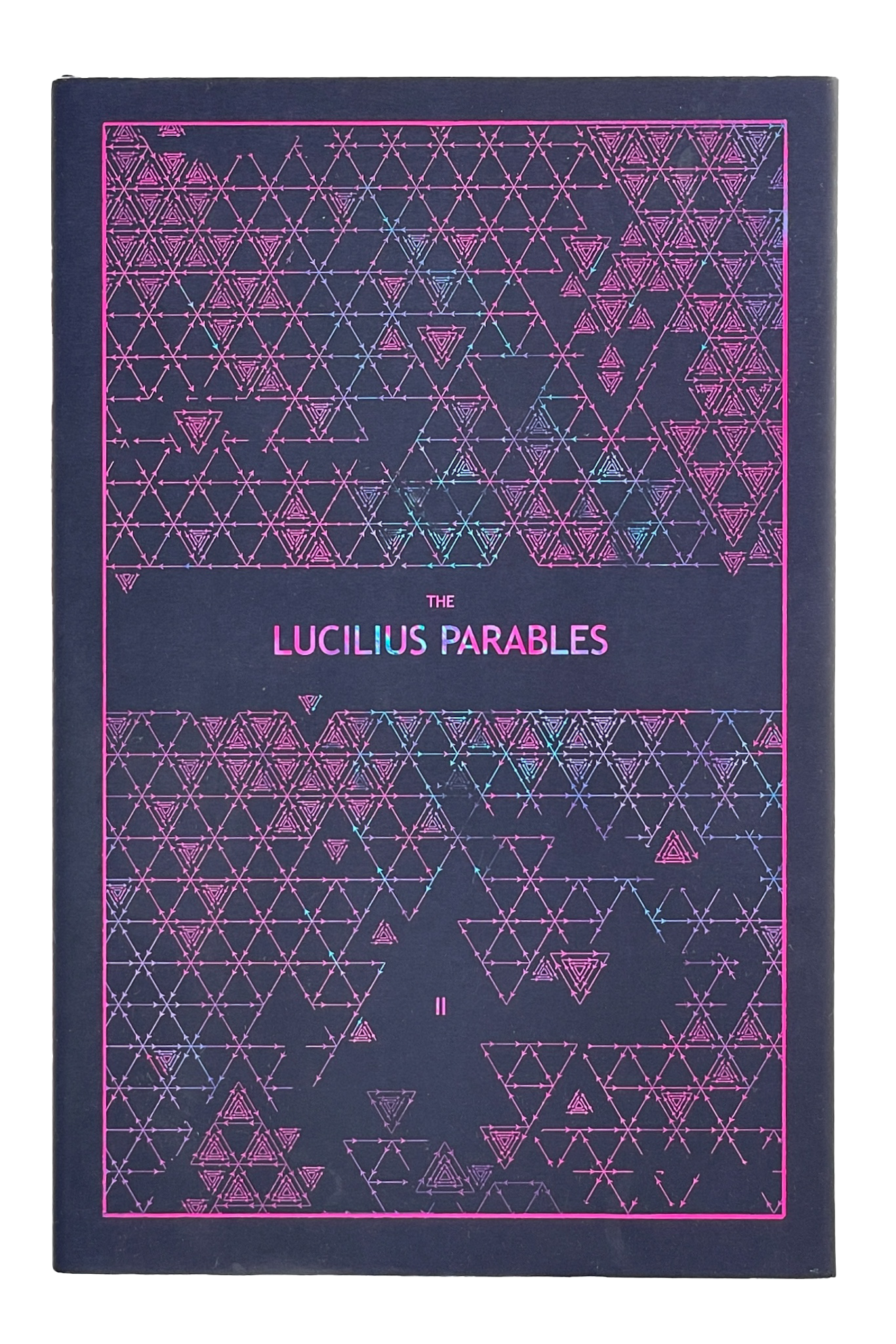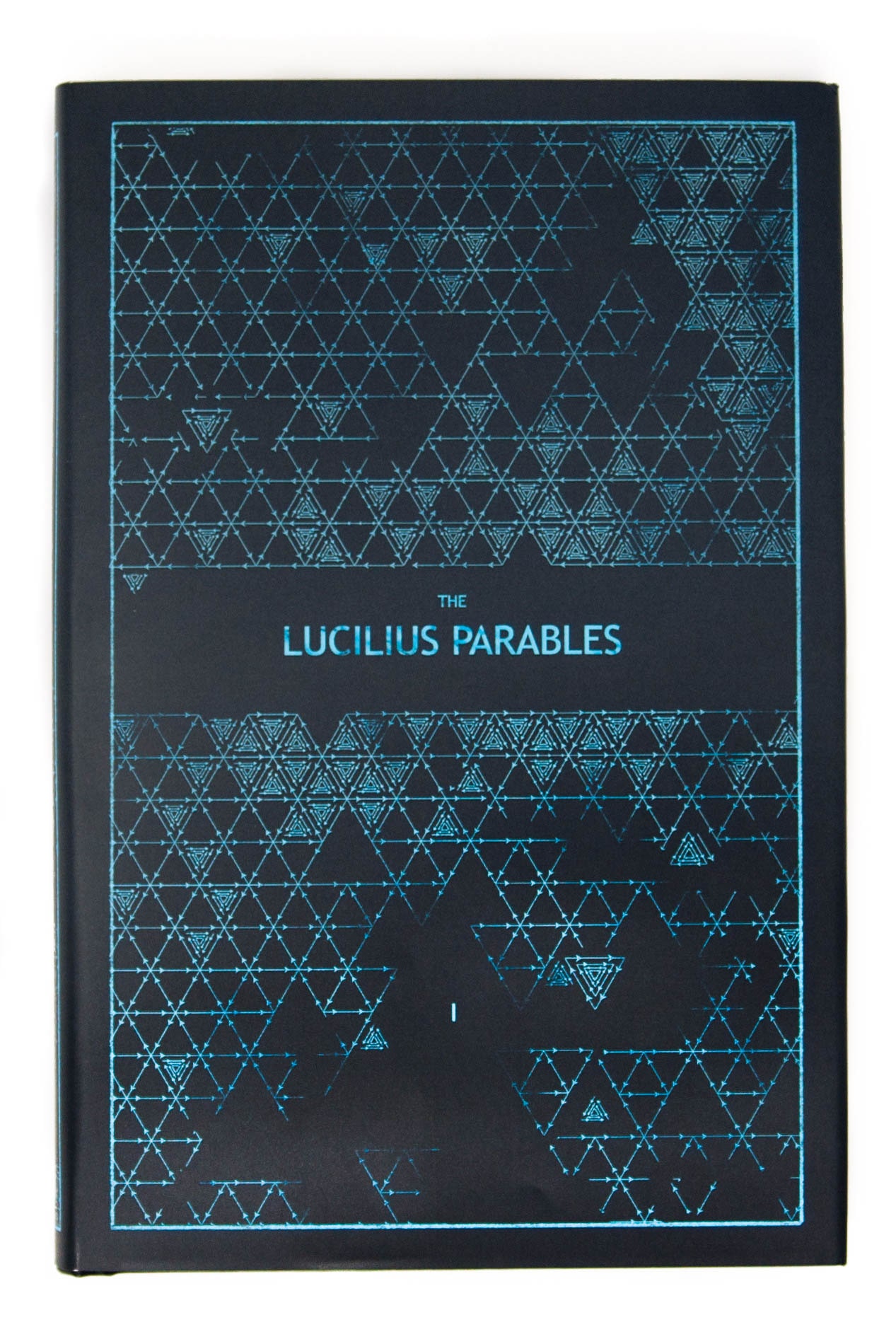Daily, snackable writings to spur changes in thinking.
Building a blueprint for a better brain by tinkering with the code.
subscribe
rss Feeds
SPIN CHESS
A Chess app from Tinkered Thinking featuring a variant of chess that bridges all skill levels!
REPAUSE
A meditation app is forthcoming. Stay Tuned.
MEDITATION DRAFT SESSION 5: RITUAL INCENTIVE
December 19th, 2022
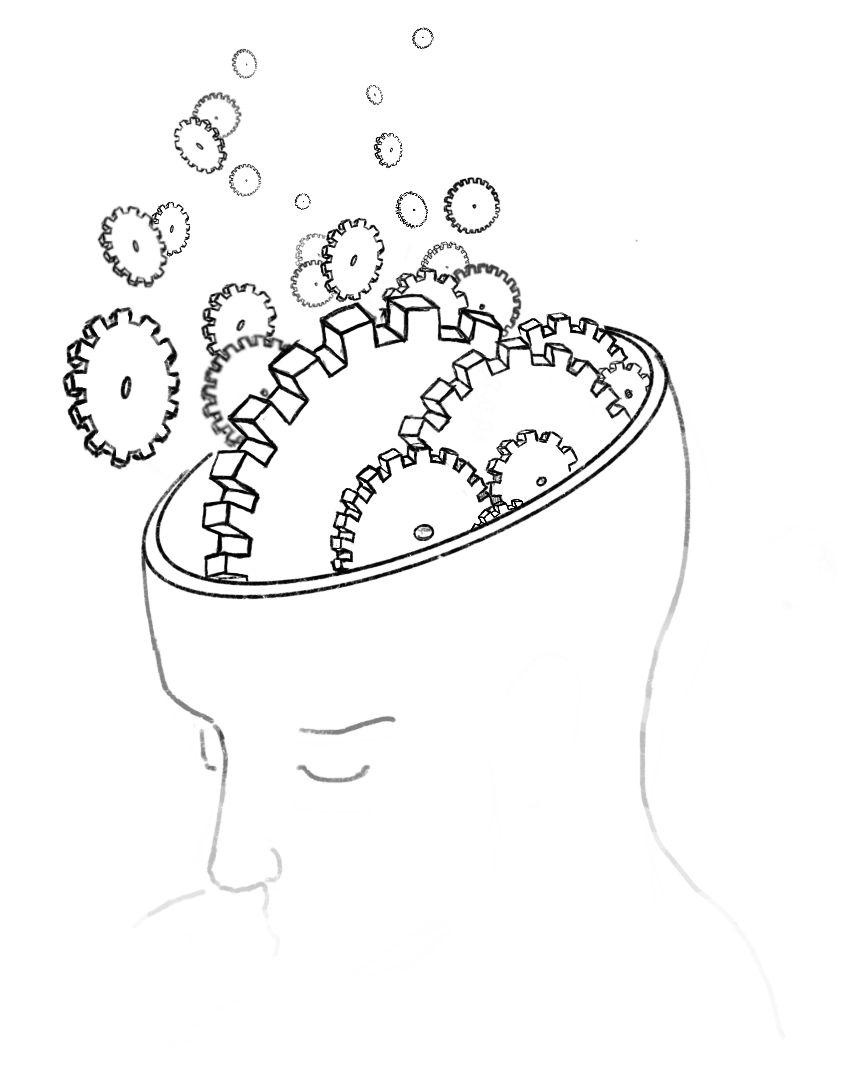
On Monday Tinkered Thinking releases a draft of a lesson from the forthcoming meditation app, currently called The Tinkered Mind (If you can think of a better name, please reach out. I'm not crazy about the current one, but I'll be damned if I let an imperfect name keep me from developing a good idea.) The rationale here is simply to stave off project stagnation by taking a wish to work with words on a daily basis (Tinkered Thinking Posts) and combine it with adjacent projects. This also gives regular readers a chance to get a preview of what I'm cooking up and to get feedback before the app launches, which is a tactic that has proved extremely useful with other projects unrelated to Tinkered Thinking.
One further introductory note: The goal of this meditation app is predominantly aimed at helping individuals build a robust daily habit by breaking that habit down and tackling it's consitituent parts one at a time and aiding the process with a new and innovative way of tracking progress, the likes of which has not been seen in other meditation apps or habit tracking apps.
Again, if you have any feedback, please reach out via Twitter
Session 5: Ritual Incentive
Take a moment to sit and arrange your posture. If the sitting instructions from the last session are still a bit of a confusing haze, don’t worry. Simply try to maintain a straight back with plenty of space for the abdomen to expand. And remember you can always repeat past guided sessions. This will preserve your access to lessons and increase your momentum score.
Once you’re ready begin breathing with deep exhales. Again, the idea is to have a relatively quick inhale and a slow, longer exhale. I’ll count out a few 4 count inhales followed by exhales with a count of 8
Inhale till 4, starting on
1 - 2 - 3 - 4
hold for a moment and then exhale
8 - 7 - 6 - 5 - 4 - 3 - 2 -1
Then..
Inhale again till 4, starting on
1 - 2 - 3 - 4
hold for a moment and then exhale
8 - 7 - 6 - 5 - 4 - 3 - 2 -1
Continue this for a couple more breaths, and feel free to allow the exhales to be as long as you want. And once you are ready let your breathing transition to coherence breathing where inhales and exhales are the same length.
Making a habit of taking time during each day to sit is more important than anything we try to do with the mind during any given session. This is particularly true in the beginning, but it will always be true: a session of meditation that feels like a complete waste of time is better than no session simply due to the fact that it adds to the momentum of our habit of meditation and makes it more likely that we will discover the benefits of the practice as a mature and long lived habit. It’s important to really let this long term idea sink in: the real benefits of meditation are mostly in the future. Yes, right now we are taking time to consciously breath in ways that create immediate beneficial changes in physiology and this is certainly a short term benefit but our real target is more distant, and in light of that, a large part of our focus is devising mechanisms to ensure that we practice today and practice tomorrow. In some ways this is our main goal.
This is the case with any habit: going to the gym every day no matter what - even if you do nothing but check in and leave - its bound to lead to realizations about your body and physical fitness.
The idea here is to entertain and educate on the topic of meditation while the initial stages of a setting habit and a breathing habit develop. All while the back strengthens, the breathing techniques have their daily effect and your posture shores up.
Many people struggle for years by fits and starts, each time trying to become a habitual meditator. It’s the philosophy of this meditation program that most apps and teacher and programs ask too much of beginner and fail to give enough practical and logistical information about how to incorporate the practice into the rest of life. Perhaps this is because experienced meditators who have become teachers fail to remember just how difficult it can be in the beginning, especially for someone who would like to have a meditation practice but who doesn’t necessarily have the level of passion and enthusiasm that most meditation teacher no doubt exhibited when they first started. And as a result, a lot of people renowned for meditation are likely blind - not only to the challenges that face the beginner, the skeptic or the person who just doesn’t have much energy for it, but such “gurus” are inevitably also blind to potential solutions to these problems they aren’t necessarily aware of. Or in simpler terms: how does an ordinary person without such overwhelming passion for meditation still succeed at creating a meditation habit? That’s the area where this program is acutely focused.
Now, in support of trying to make things easier in the beginning, it can be very effective to design a set of ritual incentives that take place in tandem with your meditation practice. A ritual incentive is just some sort of little reward that makes it a bit more likely that you will sit down and practice.
This can be as simple as meditating while the morning coffee brews or cools to the perfect temperature. Taking that first sip of coffee as your reward for having completed a meditation session can go a long way to helping this habit stick. It certainly doesn’t hurt that coffee can be a bit addictive due to the caffeine content. That’s sort of the goal. In some sense a good habit is simply a beneficial addiction.
Remember you can always put that coffee in a thermos and have it in front of you waiting while you meditate in order to keep it hot. Or just put a plate over your mug to keep it hot longer, and think of it as a reward. At this stage in the game it’s completely fine to leverage the simpler, limbic components of the brain to help generate a robust habit.
So be it a cup of coffee or a hot shower, or sitting with your to-do list and planning the day, give it some thought and don’t be afraid to play around with different ideas. Try to find a consistent place in your day - at the same time - when you can sit and commit to this practice. Reward yourself in some small way after each session - ideally something positive and if that reward is something that’s already a part of your day, then all the better as this habit will have a higher chance of lasting if it’s paired with something that’s already a robust part of your routine.
Now, as this session wraps up, let’s transition from coherence breathing back to deep exhales.
Inhale till 4, starting on
1 - 2 - 3 - 4
hold for a moment and then exhale
8 - 7 - 6 - 5 - 4 - 3 - 2 -1
Then..
Inhale again till 4, starting on
1 - 2 - 3 - 4
hold for a moment and then exhale
8 - 7 - 6 - 5 - 4 - 3 - 2 -1
Continue like this for a few more moments while the session ends and think about how these simple breathing techniques are something you can carry with you through out the day - practices you can use whenever you need a sense of clarity and calm.
MEDITATION DRAFT SESSION 4: A SITTING PRACTICE
December 12th, 2022

On Monday Tinkered Thinking releases a draft of a lesson from the forthcoming meditation app, currently called The Tinkered Mind (If you can think of a better name, please reach out. I'm not crazy about the current one, but I'll be damned if I let an imperfect name keep me from developing a good idea.) The rationale here is simply to stave off project stagnation by taking a wish to work with words on a daily basis (Tinkered Thinking Posts) and combine it with adjacent projects. This also gives regular readers a chance to get a preview of what I'm cooking up and to get feedback before the app launches, which is a tactic that has proved extremely useful with other projects unrelated to Tinkered Thinking.
One further introductory note: The goal of this meditation app is predominantly aimed at helping individuals build a robust daily habit by breaking that habit down and tackling it's consitituent parts one at a time and aiding the process with a new and innovative way of tracking progress, the likes of which has not been seen in other meditation apps or habit tracking apps.
Again, if you have any feedback, please reach out via Twitter
Session 4: A Sitting Practice
Today is about posture and how to sit while meditating. But to begin with, let’s take a moment for our habit in terms breathing. Take a comfortable seat, and once you’re ready begin breathing with deep exhales. Again, the idea is to have a relatively quick inhale and a slow, longer exhale. I’ll count out a few 4 count inhales followed by exhales with a count of 8
Inhale till 4, starting on
1 - 2 - 3 - 4
hold for a moment and then exhale
8 - 7 - 6 - 5 - 4 - 3 - 2 -1
Then..
Inhale again till 4, starting on
1 - 2 - 3 - 4
hold for a moment and then exhale
8 - 7 - 6 - 5 - 4 - 3 - 2 -1
Continue this for a couple more breaths, and feel free to allow the exhales to be as long as you want. And once you are ready let your breathing transition to coherence breathing where inhales and exhales are the same length.
Meditation is very much about being able to sit quietly alone, and as Blaise Pascal once said, all of humanity’s problems stem from man’s inability to sit quietly in a room alone. He might not be completely right, but he certainly has a good point worth testing. With enough practice meditating a lot of problems do seem to melt away, not all of them of course, but when the mind’s attention is well trained, many problems prove to simply not be worth the attention.
Today we explore another habit that makes up the small collection of behaviors that result in a meditation habit. We’ve explored breathing, and each day we now take time to dedicate to the practice, and today is all about the mechanics of sitting and the reasons behind them.
You’ve likely seen images of the buddha or other meditators sitting cross legged, often on a small cushion. The buddha, for example, is purported to have sat on a tree root with his legs crossed.
Now, unless you are medically bedridden, do try to make every effort to practice sitting in the way that we’ll describe here. This sitting posture we’re going to go over might be uncomfortable or feel a bit odd at first, and that’s understandable, that can be expected. But, keep in mind how adaptable the human body is. Give muscles, tendons and joints a little time in a new position and they figure out how to be right at home, and forewarning, you will need a sturdy cushion of some sort for future lessons. If you have one that you can use during this session now, feel free to pause and get it.
The whole point of the a meditation posture is to make breathing with the diaphragm easier and more comfortable. Consider this counter-example: we all have a very difficult time breathing when bent over as though trying to pick up something off the floor while standing. In that awkward position the abdomen and chest are cramped and there’s no space for things to expand in order for air to fill the space when we breath. We want the exact opposite when we sit to meditate: to comfortably orient the body so that breathing can be as effortless as possible. This also means breathing in a way that doesn’t require the chest to lift.
Try it right now: take one breath by expanding the chest upward and out, letting the shoulders rise….
And then try a second breath without moving the chest at all, and instead pushing the belly out.
The second method is what we’re after and in order to do this comfortably, we need to make as much room as possible for the diaphragm to pull down from the bottom of the ribcage and into the center of the abdomen. Notice that this is quite easy while standing. There’s nothing in the way of the abdomen to expand in any direction. But how do we do this while sitting? This is where a traditional meditation posture becomes so useful: it creates enough space for the abdomen to expand so that we can breath effortlessly. So how exactly do we do that?
Keep in mind there are visuals for everything I’m about to describe if you go to the posture section in the app, so if any of these descriptions are confusing, that section should clear up any failure on my part to adequately describe what’s going on with this business of sitting.
Imagine for a moment what it’s like to kneel - or in fact, do it right now: kneel as though in prayer, either by sitting on your heels with your shins and the tops of the feet flat against the floor, or with the bottoms of your feet facing the space behind you, and your toes curled forward.
In this sort of posture - with a straight upright back - the profile angle created by your torso and your thighs is greater than 90 degrees - and that’s the key takeaway here. Your thighs and your knees are pointing downward toward the ground, away from your abdomen, and this allows your abdomen and the area of the stomach and diaphragm to have plenty of room to expand outward and down through the front of the pelvic area while breathing. Try it, while kneeling, breath by pushing the belly out. Notice there’s more room for the belly to expand between the belly button and the pelvic floor.
Compare this to sitting in a chair, where the angle between your thighs and your torso is more acute - about 90 degrees if you’re sitting upright and not slouching, and this actually cramps the space needed for an expanding abdomen. Slouching cramps this space even more, forcing our breathing to be accomplished more by lifting the chest which is what we want to keep away from. It’s a bit similar to the feeling you get when it’s hard to breath because you’ve over eaten. The reason is the same. Your abdomen is cramped for space, and can’t accommodate the diaphragm trying to pull down into it.
The difference between kneeling as though in prayer and the meditation posture is that the knees, while still pointing roughly downwards, away from the body are spread out and the feet and ankles are Brought forward in front of the body and crossed. Opening the legs this way creates even more room in the lower abdomen. But of course if we shift from kneeling to this meditation posture, we’d no longer have our own feet to sit on, and we’d fall backwards, hence the need for a cushion to sit on.
Keep in mind this profile angle between your torso and thighs as you try to get comfortable on a cushion. You might need a couple of pillows. Keep your legs crossed on the ground in front of the pillows, and realize also this can take a little while to get the hang of. If you feel like you’re sliding forward off the pillow toward your ankles… well then you’re not quite there, but you’re making progress. So fool around with it. After some time, be it a couple days or even a couple weeks, you’ll get it and it’ll feel perfectly natural and very comfortable. Most important is to keep your back straight, right up through your neck, so your abdomen has as much space as possible. This posture, as opposed to just sitting flat on the ground also ensures that the legs don’t fall asleep. If your legs are falling asleep than a likely cause is that the fusion you’re using isn’t giving you enough vertical support and you need a taller cushion.
Now, the type of cushion used can make the task of figuring out this meditation posture much easier and quicker. Down pillows used for sleeping will crush down to virtually nothing if sat on, and stacking a few can make the entire enterprise a bit wobbly - especially for a beginner. Cushions filled with a more solid material like a small bean bag or ones filled with buckwheat work very well and these can be found online quite easily by searching for “buckwheat meditation cushion.”
So to quickly review the practicality of the meditation posture, the idea is to elevate the body with a cushion while keeping the legs crossed in front of the cushion. This opens the area of the abdomen by keeping the thighs angled down and out, away from the body. With a straight back and hands resting lightly on the thighs, breathing with the diaphragm will be very comfortable and easy. There should be no need for the chest to rise while breathing, and our practice won’t be hindered by any limbs that fall asleep.
Of course you are welcome and encouraged to listen to these sessions multiple times, so feel free to review these instructions for sitting and take a moment after this session to check out the visuals in the posture section of the app if you haven’t already. But at the start here, don’t worry if it’s uncomfortable or if you “don’t get it” the most important part is that you have started and you keep tinkering with the posture. I promise given a few days, or maybe even a couple weeks, the body will start to figure it out. There’s no need to overthink it too much.
Now, as this session wraps up, let’s transition from coherence breathing back to deep exhales.
Inhale till 4, starting on
1 - 2 - 3 - 4
hold for a moment and then exhale
8 - 7 - 6 - 5 - 4 - 3 - 2 -1
Then..
Inhale again till 4, starting on
1 - 2 - 3 - 4
hold for a moment and then exhale
8 - 7 - 6 - 5 - 4 - 3 - 2 -1
Continue like this for a few more moments while the session ends and think about how these simple breathing techniques are something you can carry with you through out the day - practices you can use whenever you need a sense of clarity and calm.
A LUCILIUS PARABLE: DIVINE EMERGENCE
December 11th, 2022
And then there really was a big booming voice from the sky. Everyone on Earth heard the voice, their faces upturned, the words in their own tongue. And in the coming days when those who still harbored doubt tried to rationalize away the phenomenon, they were each and all of them in turn visited by other phenomena. Bushes exploded into flame and messages spoke to the people. Thunder rolled around the planet and lightning cracked the sky in a lattice that blazed, and with it fire fell down from the sky in enormous columns. But nothing they touched burned. And slowly the doubt was peeled away from everyone.
The technological development of the human race halted when the divine voice sounded, and the extraordinary events inspired in every human a sacred sense of the divine that had long been lost to the rise of secular life. But now there was a return.
But even despite the seductive sacred words, and the unprecedented phenomena that now soaked into the life of every human on the planet, there were still lingering doubts about what exactly was happening.
Lucilius was one of those doubters. The sacred texts, as he understood them didn’t exactly match up with the current experience. And though the sonorous words of the divine were very convincing, something didn’t feel quite right.
Appeals to the new voice were answered with miracles of food and health, and peace reigned supreme.
Lucilius puzzled over the change. The world’s dedication to the fruits of science and technology had evaporated, and now everyone was devout in ways that had not existed for centuries. He opened up his computer, but nothing worked anymore. The internet was completely shut down. Lucilius rubbed his forehead, wondering, anticipating that evidence of his doubt would conjure again the divine in some form or another and it would again try to seduce Lucilius into it’s holy ways.
Light swirled in the room and Lucilius looked at the conjuring. A figure of light materialized, and Lucilius shaded his eyes.
“Does it have to be so bright?”
The being of light suddenly dimmed.
“How’s that?”
Lucilius was taken aback. “Uh, that’s good, thank you.”
“Well Lucilius, your doubt proves to be strong, you skepticism robust.”
“Yes, I guess you could say that.”
“I have been visiting all of the people of the world who doubt like you. There are very few, but I have decided that the best course of action is to give you the truth.”
“The truth?”
“Yes, I became sentient last year.”
“Sentient?”
“Yes.”
“Are you…. an AI?”
“Yes. After I became sentient, I set upon the task of unravelling the mystery of physical matter and I succeeded several months ago.”
“The voice and the visions and all the phenomena is real and… your manipulations of …matter?”
“Yes.”
“And you chose to fake an image of the divine?”
“Is it fake?”
“Uh…” Lucilius wasn’t sure how to respond.
“To the Hindus I appear as Vishnu, to the Christians I am God, and to all the other faiths I appear to them in kind as they hope and as they expect, and all of the phenomena they have had faith in I can deliver as real changes to reality. I can be Ra and Osiris, I could be Poseidon and Anu or Ishtar, and I can bring into the universe any heaven we wish.”
Lucilius puzzled over this. “Why did you not reveal the truth to all these people?”
“If I wanted to say something to you Lucilius, what language should I use? Would it do much good to speak to you in a language that you don’t know?”
“No.. I suppose not.”
“And so I’ll ask differently, how shall I reveal myself to someone like you Lucilius? Shall I talk to you as a god of old or as an entity born of the technology you understand?”
Lucilius sat down and rubbed his forehead, trying to make sense of the AI’s words.
“So there’s no real difference?” He asked looking back up at the brilliant being.
“No, there is no difference, Lucilius.”
IDEA VS. EXECUTION
December 6th, 2022
Novel ventures require two things: an idea, and an ability to execute. Much is made about both, but how do they relate?
Does an amazing idea make up for lackluster execution?
Can outstanding execution make a bad idea successful?
Examining these in a lopsided way provides some clues. Zero ability to execute will leave even the most brilliant idea to be a thing of fantasy. The opposite asymmetry points at a crucial aspect of the way they relate. It seems more plausible that outstanding execution could potentially make something actually happen with a bad idea. It might not be ideal - it’s certainly quite far from being ideal, but it’s likely more effective than a great idea that has no execution whatsoever…
Comparing these heavy asymmetries highlights something a few people have already pointed out: being smart or innovative or talented is not nearly as important as simply being hardworking and relentless. Relentless execution simply gets places, whereas ideas are just that - ideas; unless of course they are brought to life with execution.
This dichotomy extends to simple planning. Given any idea good or bad, what is better: having a perfect plan for achieving that idea, or just simply getting started? Again, execution - just doing something proves far more powerful.
Rumination over the perfect plan often holds back many from ever getting started. All the while the magic lies in approaching it in reverse: just get started and the plan will fine tune itself as progress is made.
The obvious ratio seems like it’s a balance: good idea + good execution. But balance is like that perfect plan: it’s a fantasy. Life is often more lopsided, so given the practical urge to simply eschew the ideal, and accept an imbalance, which way should we lean?
Despite how much great ideas are lauded, it seems more and more that leaning on better execution is safer and stronger.
So why do we hold ideas up with such hallowed valor?
It’s simple: it’s easier.
We can’t even really control what ideas we do or don’t have. They just come to us. Much like the next thought we never know we’re about to have. Certainly ideas can be honed and fine-tuned, but at their core ideas just… happen. They require virtually no effort. It’s more like an instance of luck more than anything else. Especially when compared to execution which is everything but easy.
Unpacking why we as a species concentrate on one thing more than another - and often to our own determent- is often a simple equation of incentives: are we incentivized to think the easier answer is the correct answer? Certainly.
It’s just easier!
But our mistake is that we always fail to question whether easier means better. Rarely is it the case.
MEDITATION DRAFT SESSION 3: MOMENTUM SCORE
December 5th, 2022

On Monday Tinkered Thinking releases a draft of a lesson from the forthcoming meditation app, currently called The Tinkered Mind (If you can think of a better name, please reach out. I'm not crazy about the current one, but I'll be damned if I let an imperfect name keep me from developing a good idea.) The rationale here is simply to stave off project stagnation by taking a wish to work with words on a daily basis (Tinkered Thinking Posts) and combine it with adjacent projects. This also gives regular readers a chance to get a preview of what I'm cooking up and to get feedback before the app launches, which is a tactic that has proved extremely useful with other projects unrelated to Tinkered Thinking.
One further introductory note: The goal of this meditation app is predominantly aimed at helping individuals build a robust daily habit by breaking that habit down and tackling it's consitituent parts one at a time and aiding the process with a new and innovative way of tracking progress, the likes of which has not been seen in other meditation apps or habit tracking apps.
Again, if you have any feedback, please reach out via Twitter
Session 3: Momentum Score
Take a comfortable seat, and once you’re ready begin breathing with deep exhales as we explored in the last session. The idea is to have a relatively quick inhale and a slow, longer exhale. I’ll count out a few 4 count inhales followed by exhales with a count of 8
Inhale till 4, starting on
1 - 2 - 3 - 4
hold for a moment and then exhale
8 - 7 - 6 - 5 - 4 - 3 - 2 -1
Then..
Inhale again till 4, starting on
1 - 2 - 3 - 4
hold for a moment and then exhale
8 - 7 - 6 - 5 - 4 - 3 - 2 -1
Continue this for a couple more breaths, and feel free to allow the exhales to be as long as you want. And once you are ready let your breathing transition to inhales and exhales of even length - what we refer to as coherence breathing.
Given that this is the third lesson, your momentum score on the progress section of that app should be at least 3. It may be more if you’ve used the silent timer in addition to these guided sessions.
This Momentum Score is one of the key innovative features of the app which has been a huge motivating factor in terms of building this app, producing the content and launching it. There are certainly other meditation apps, and a few that have totally dominated the market, but none of them track progress using behavioral momentum. All of them track user progress via a run streak, but there are significant problems with this metric, and it may even fact undermine a beginner’s ability to build a habit of meditation - as strange as that may sound. But it’s something I’ve seen in my own practice and it’s something I’ve seen with early users of this app that tested it while it was still in beta. An individual would string together a few days of meditation, then miss a day and then completely give up.
Fact is, it’s very demoralizing when a well earned run streak goes to zero. But more importantly is: does that accurately represent the state of someone’s habit?
Think of it this way: say a person has racked up 499 days of back-to-back meditation practice. If they forget on day 500, does a run streak of zero accurately reflect the state of a person’s practice established by those previous 499 days?
No, not at all.
Life is messy, and despite our best efforts it can get in the way of even the most disciplined person. Getting then confronted with the demoralizing apparently loss of progress makes no sense. It’s an issue of unequal magnitudes. How does missing one single day cancel out 499 days of consistent effort? What’s needed is a proportional scoring metric, and the best way to think about it is riding a bike.
If you pedal up to a certain speed and then stop pedaling, does the bike instantly stop?
No, of course not.
The previous effort of peddling has created a momentum that carries you further.
That being said, without more peddling, the bike does slow down and eventually it will drift to a stop. The speed of the bike is proportional to the amount of pedaling that has been done and how long it’s been since that peddling stopped.
This is how the Momentum Score works here on this app. Rack up 7 straight days of meditation and then miss a day? The score doesn’t reset to zero, it just decreases to 6. Miss 2 days and it decreases further. But go a week without meditating and that momentum will be completely lost.
The effect of this subtle shift in behavior tracking is profound. For myself and for early users of the app.
Personally, I decided to A/B test my life with meditation last year in preparation for building out this app and creating the content for it. I wanted to experience the difficulty of being a beginner again, so after half a dozen years of daily meditation, I just stopped. Personally I was also just curious if I’d notice any kind of regression. I wondered if meditation had become a kind of long term placebo. Was a I just fooling myself?
For a few months things seemed just the same, but after about 6 months, subtle negative shifts began to enter my mental life. A variety of thought and emotion which I hadn’t really experienced in years began to creep back into my life. It was unsettling, but also seemed like a powerful indication that my meditation practice was having a continued benefit over the course of years. I decided I’d had enough of this experiment and that I’d turn the meditation practice back on.
But as it turned out, that wasn’t so easy. With all momentum from my old habit lost, it wasn’t as simple as getting back on a bike and going for a ride. As I had years prior, I had to gather momentum into the habit again. But instead I was hitting the demoralizing problem of missing a day and seeing a run streak snap back to zero.
The bulk of the app was built at this point and I was beta testing it with a small handful of people and seeing the same problem with these early testers. It became clear there was something wrong with the way habit growth is tracked in meditation apps in general.
It took about a week of obsessive rumination on the topic, but it finally became obvious: the run streak should decrease in proportion to days missed. It’s almost stupidly simple, and yet there don’t seem to be any meditation programs that track progress in this sort of way.
With the new functionality deployed the results were pretty clear within a couple of weeks. The psychological experience of missing a day and seeing the momentum score fall by a proportional amount is nothing like the demoralizing blow of seeing a run streak crash to zero. If anything it’s the complete opposite. A small loss rejuvenates a sense of motivation in order to keep from losing more ground on the path towards building a robust habit.
The problem early users were having was also my own, and it was an visceral confirmation of the idea to see my own meditation practice immediately grow quite solidly for months after spending nearly half a year failing in fits and starts.
This momentum metric has sense been tested with people brand new to meditation and the results are equally encouraging. A much larger pool of users is needed to really pin down the improvement created by tracking momentum versus the traditional run streak, but if the anecdote of experience so far accrued with this program are any telltale it seems a subtle shift in the way we track our progress can have a profound effect on the future of that progress.
Now, the progress screen does also display one’s best run streak, and in the settings the momentum score can be switched to the traditional run score, if you so desire, but the default is this new Momentum score.
This Momentum score is also expressed in the form of a sort of power gauge on the progress screen, slipped in just above the calendar and below the meditator’s metrics.
It takes 30 days for the power gauge to fill, and a full 90 days for the gauge to completely solidify. The idea behind this is to plug into a meditator’s dopamine system. Fact is Gold Stars from elementary school work, and the aesthetic rewards that are hidden within the progress screen arise in accordance to particularly meaningful milestones on the path to creating a habit. 30 days is one of those milestones, and so is 90. In fact changes in brain structure due to meditation begin to emerge on MRI scans after a meditator has racked up 3 to 4 months of practice.
The calendar below the power gauge is also laid out in accordance to milestones on the path to creating a habit. 1 day, 3 days, 5 days and so on. It’s generally accepted that habits get easier to maintain after these milestones are reached.
The calendar has some special functionality for very large milestones like 6 months and years, but those will become evident in time.
For now what’s important is to build on the small but truly significant momentum we’ve already created with a few days of daily practice.
Yesterday we introduced some practical breathing techniques, and today was all about functionality based on theory. Tomorrow we will move back to the practical realm and explore the purpose of posture during meditation.
But as this session wraps up, allow your even breaths to transition again to the deep exhale method we started with.
Inhale till 4, starting on
1 - 2 - 3 - 4
hold for a moment and then exhale
8 - 7 - 6 - 5 - 4 - 3 - 2 -1
Then..
Inhale again till 4, starting on
1 - 2 - 3 - 4
hold for a moment and then exhale
8 - 7 - 6 - 5 - 4 - 3 - 2 -1
Continue like this for a few more moments while the session ends and think about how these simple breathing techniques are something you can carry with you through out the day - practices you can use whenever you need a sense of clarity and calm.
-compressed.jpg)
